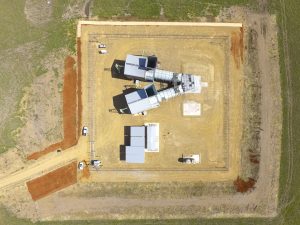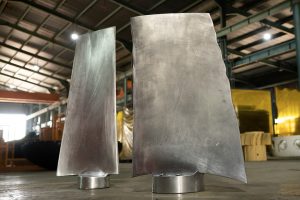Continuing its philosophy of biomimicry, Air Blow Fans has unveiled another innovative fan blade design that takes its cues from the natural world. Building on the success of the company’s previous whale-inspired blades, this time the inspiration came from birds’ wings.
Traditional axial fan blade designs employ a uniform planform shape that is differentiated by various factors such as the aerofoil shape, blade profile, twist, and camber from the root to the tip. However, according to Professor Glen Snedden, who helped spearhead the development of new blade designs at ABF, the company’s latest offerings feature a structurally simpler design that deviates significantly from these traditional blade shapes. This simpler design is not only more robust but also makes it easier to replicate across ABF’s range of auxiliary axial fans.
“It is economically unfeasible to design and build different rotor blades for every fan in our range,” explained Snedden. “So we aimed to create a rotor shape that can optimally serve our full line-up of auxiliary fans from 0.4m to 2m diameters.”
Our engineering team turned to the research work of Janine Versteeg from the University of Pretoria, who has studied the wing profile of the Grey Headed Albatross, an efficient glider native to Marion Island. We also drew insights from other bird species, like the owl, a silent and efficient hunter. This allowed us to realise gains of up to 2% efficiency over conventional techniques by tailoring the blade’s inner radii to mimic the low-speed, high-lift geometries of gliding bird wings. The outer blade radius retained a more conventional high-speed profile.
“The resulting hybrid shape features a distinctive tubercle pattern at the intersection of the two profiles,” said Snedden. “And we retained the regular tubercle arrays used in our previous whale-inspired blades on the outboard sections.”
This biomimetic approach marks Air Blow Fans’ second foray into leveraging nature’s battle-tested aerodynamic solutions following its acclaimed whale-inspired industrial axial fan launch in 2022.
“In my opinion, this is an improvement over the previous blade design, maintaining a stable airflow over a wider operating range than before and thus allowing for greater efficiency over the range of fan sizes,” ” says José Martins, ABF’s Business Development Manager. “Pushing the boundaries of biomimicry continues yielding tremendous benefits.”
This new design is now being introduced into our Auxiliary fan range using aerofoil rotor blades. While these features can easily be included on any custom primary fan design as well, for the time being, our existing primary fans will continue to use traditional rotor blade shapes (until we devise something new for those too, of course!)
At Air Blow Fans, we’re not just designing and building fans. We’re redefining what’s possible. And as we continue to dream and innovate we anticipate nature to provide us with even more elegant solutions for human engineering challenges.









Efficient Gas Flow
Technology
by a Team of Innovators
SIGN UP FOR ARTICLES
Contact Us
+27 11 452 0726
info@airblowfans.co.za
ICC Medical Building,
Irene Corporate Corner,
Irene, Centurion